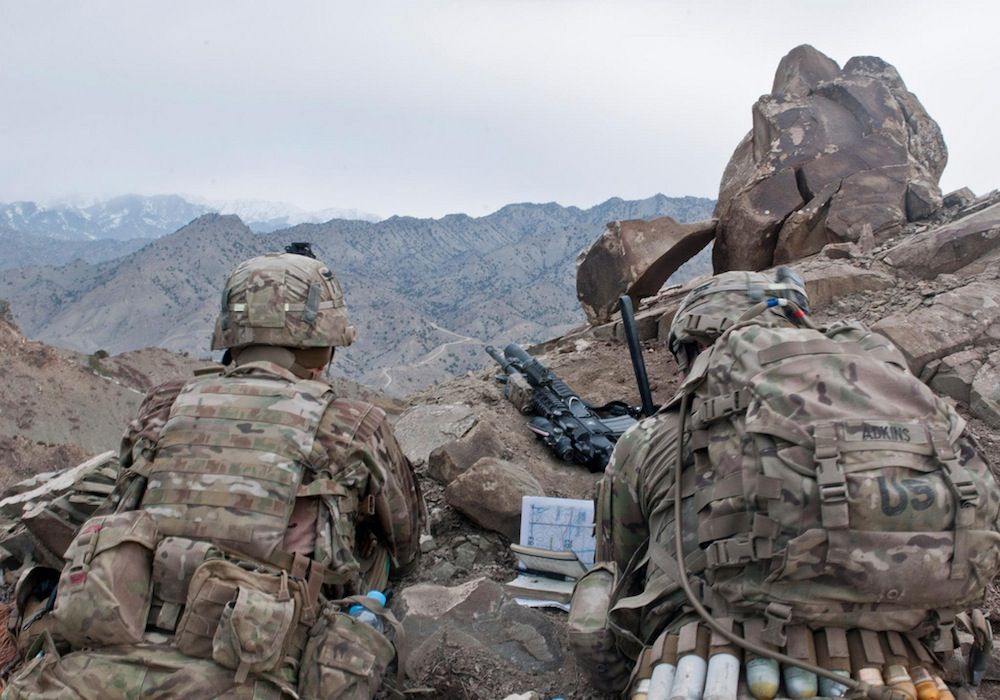US Army Finds Tech Solution to Soldiers' Altitude Sickness

The United States Army is studying how the human body adapts to mountainous conditions in order to develop new tools to help deployed soldiers combat altitude sickness.
The researchers created an altitude-acclimatization computer model that allows the Army to assess an individual's likelihood of getting altitude sickness and its potential severity. The patent-pending technology is designed to help commanders plan future missions and mitigate the potentially harmful effects on troops.
Soldiers deployed in mountainous terrain often lack adequate time to adjust to the altitude changes, and these rapid ascents can lead to altitude sickness, officially called acute mountain sickness, or AMS, said Stephen Muza, acting division chief of the Thermal and Mountain Medicine Division at the U.S. Army Research Institute for Environmental Medicine located in Natick, Mass. [The World's 10 Tallest Mountains]
"This condition, marked by nausea, fatigue, headache and gastrointestinal distress, can really throw a wedge into a mission when not planned for," Muza said in a statement.
High up in the mountains
Sudden exposure to high altitudes lowers the supply of oxygen to the body's tissues — a condition known as hypoxia — which precipitates altitude sickness and can affect mental and physical performance.
"A soldier may not be able to carry as heavy a load as they are used to or even march at speed," Muza said.
Sign up for the Live Science daily newsletter now
Get the world’s most fascinating discoveries delivered straight to your inbox.
Currently, about 63,000 American troops are based in Afghanistan, which boasts mountains and elevations higher than 24,000 feet (7,300 meters). To study the physiological effects of acute mountain sickness, researchers from the U.S. Army Research Institute for Environmental Medicine spent this past summer in more familiar mountains: Pikes Peak in Colorado.
Scientists in the Thermal and Mountain Medicine Division make yearly research treks to Pikes Peak, where the 14,000-foot (4,260 m) elevation, enables them to validate studies conducted in artificial altitude chambers.
Over the course of two years, researchers collected data from 70 men and women who performed activities at four different altitudes. Previous studies have indicated that altitude, time at altitude, gender and physical activity levels are important factors that contribute to acute mountain sickness, the scientists said.
"By using the wealth of historical data combined with the studies we have done at Pikes Peak, we have been able to pool information and create this important system," primary study investigator Beth Beidleman, a research physiologist for the Thermal and Mountain Medicine Division, said in a statement.
Fighting altitude sickness
The researchers incorporated each aspect of the population-based data into a computer program that can predict an individual's likelihood of developing altitude sickness, in addition to providing information on how to alleviate the negative effects and improve performance.
"This model allows commanders to mitigate the impact of altitude exposure," Beidleman said. "It not only predicts whether a soldier would get ill at certain altitudes, it gives a prescription for exposure. This tool can prescribe, for example, that if [soldiers spend] two days at 8,000 feet before they go to their final altitude of 14,000 feet, the likelihood and severity of AMS would be drastically reduced."
The scientists are currently working with the MIT's Lincoln Laboratory to introduce the technology as a smartphone-based application. Eventually, the tool may be integrated into a wristwatch or GPS system, Beidleman said.
Understanding the effects of altitude sickness will help commanders and unit leaders prepare their troops and more effectively plan missions in mountainous regions.
"If a commander has a small unit of 12 soldiers with specialized skills, and potentially two can get sick, that really impacts their mission," Biedleman said. "With this tool, he or she can think ahead to bring an extra person or allow for more time for soldiers to acclimatize to the altitude. Essentially, it tells them the risk and also provides them with ways to mitigate that risk."
Follow Denise Chow on Twitter @denisechow. Follow LiveScience @livescience, Facebook & Google+. Original article on LiveScience.

Denise Chow was the assistant managing editor at Live Science before moving to NBC News as a science reporter, where she focuses on general science and climate change. Before joining the Live Science team in 2013, she spent two years as a staff writer for Space.com, writing about rocket launches and covering NASA's final three space shuttle missions. A Canadian transplant, Denise has a bachelor's degree from the University of Toronto, and a master's degree in journalism from New York University.










